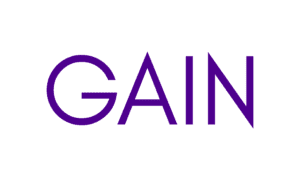Welcome to the world of finance, where adaptability is the name of the game. Today, we’re delving into a fundamental concept: “Target Costing.” But don’t let the jargon scare you away; we’re going to break it down in the simplest way possible.
So, what’s the deal with Target Costing? Well, it’s a smart strategy that helps businesses stay competitive in dynamic and uncertain environments. In essence, it’s all about keeping your costs in check while making sure your products or services remain appealing to customers. Sounds like a win-win, right? Let’s explore how to do it.
Scenario planning: A simple way to prepare
Picture this: You’re planning a road trip, and you want to be ready for any weather. Scenario planning is like packing an umbrella and sunscreen just in case. In finance, it means creating different future scenarios based on what might happen. Think of these as possible routes for your business. What if the market changes? What if customers’ tastes shift? By looking at these “what-ifs,” you can prepare for the best and worst outcomes.
Incorporate uncertainty and risk: Like a safety net
In finance, uncertainty and risk are like unexpected bumps in the road. They can mess up your plans. To deal with them, we use tools like probability distributions (think of them as spreads of possibilities), confidence intervals (like a range of expected results), simulation (pretending different things happen), and sensitivity analysis (seeing how small changes affect your plan). These tools help us prepare for surprises and make smarter decisions.
Regular adjustments: Keeping your GPS updated
Your GPS doesn’t just take you to your destination once. It updates as you drive, accounting for traffic and roadblocks. Similarly, target costing and CVP analysis need constant checking. Watch how your business is really doing compared to what you thought. If things aren’t matching up, adjust your plans. Change your product, pricing or marketing strategy. Stay flexible in a changing world.
Stakeholder collaboration: Everyone in the car
Finance isn’t a solo journey; it’s a team effort. Think of stakeholders as your travel companions. They could be your customers, suppliers, employees, or investors. Talk to them. Understand what’s happening in the market, what customers want, and what competitors are up to. When you all work together, it’s like having a well-prepared travel team.
Continuous learning and improvement: Road trip reflections
Imagine you’re on a road trip, and you stop to see the view at different spots. You learn what’s working and what’s not. Finance is the same. Keep measuring how you’re doing. Find out your strengths and weaknesses. Learn from your successes and mistakes. Compare your progress to others in the same business. Keep getting better at managing costs and making profits.
In finance, adaptability is your best friend, and target costing is your toolkit. No matter where you are in your financial journey, embracing scenario planning, managing uncertainty, adjusting regularly, collaborating with stakeholders, and learning continuously are the keys to success. With these strategies in your financial toolkit, you’re better equipped to navigate the twists and turns of the finance world. Stay adaptable, and success will be your destination.
Actions to do:
- Start thinking about different scenarios for your financial plans, like you would for a road trip.
- Explore risk management techniques like probability distributions and sensitivity analysis in simple terms.
- Make a habit of regularly reviewing your financial performance and making adjustments.
- Engage with your team and stakeholders to make better-informed decisions.
- Always strive for improvement by learning from your financial experiences.






